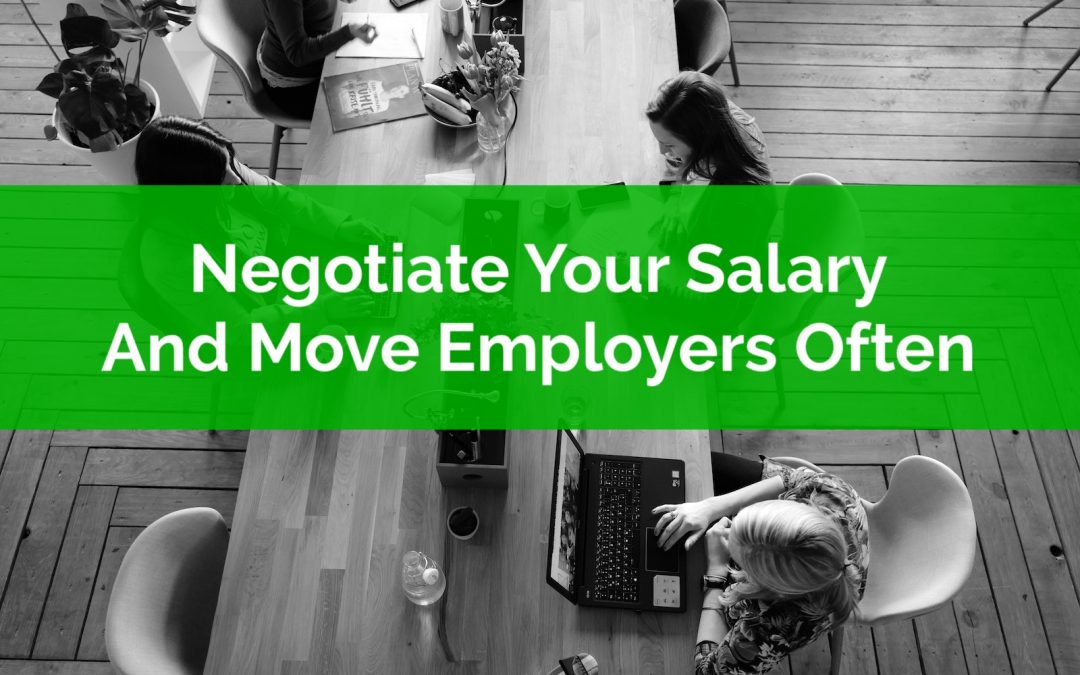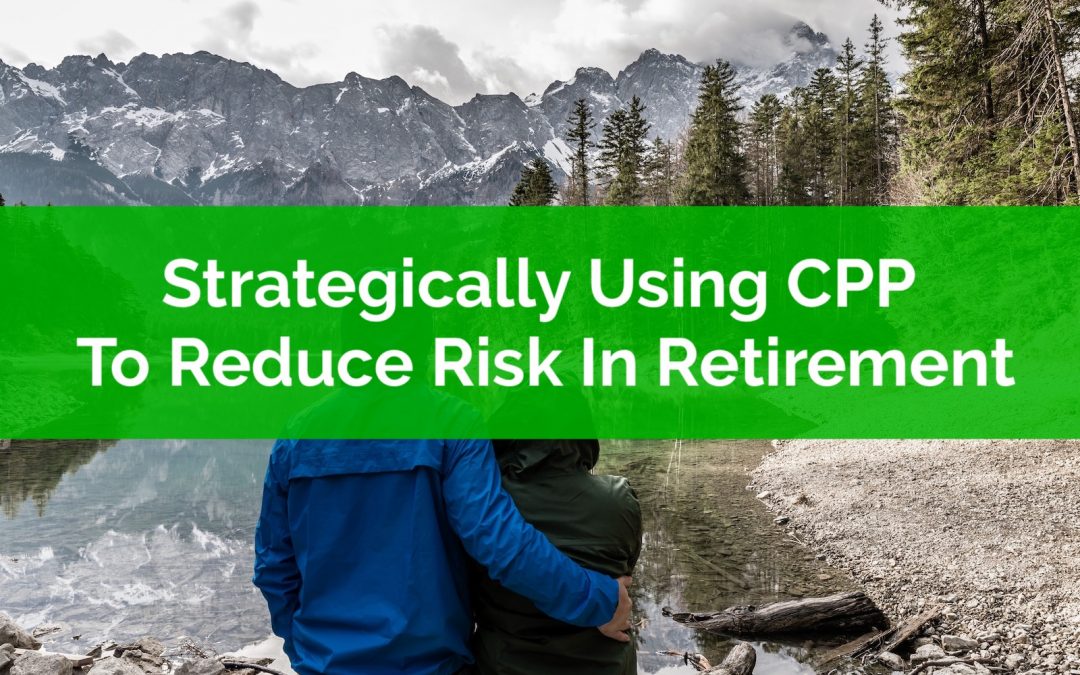
by Owen | Oct 5, 2020 | Financial Goals, Financial Planning, Income, Saving Money
One of the most important pieces of a financial plan is income. Without an income it’s simply impossible to achieve any financial goals. Plus, having a higher income makes financial goals significantly easier to achieve.
While expenses often get a lot of focus because they’re entirely within our control, the fact is that without a certain level of household income it becomes much harder to save, invest, and still cover monthly spending.
This is why income, and specifically how income changes, should be an important part of every financial plan. Increasing income over time will make financial goals significantly easier to achieve, it makes debt payments a smaller proportion of net income, and it makes it possible to juggle competing priorities.
But unlike spending, income is unfortunately not completely within our control.
Increasing your annual income can be done a number of different ways. There are “side hustles”, there are second jobs, there is semi-passive income from rental properties etc. etc.
But the best and easiest way to increase income is to get paid more for what you’re already doing. You’re already at work, why not get paid more for doing the same thing?!? No “side hustle” required. No extra work. No stress of rental properties and bad tenants.
Increasing income is quite common, especially in a persons early 20’s and 30’s. On average income increases 7% per year during this phase. Once we reach our 40’s the pace of increases starts to slow down but those 15-20 years of steady increases can make a big difference.
How do you get salary increases of 7% per year (on average)? It takes a few things to make it easier, negotiating your salary is one, and unfortunately, switching employers often is another.
How impactful is increasing your income? Massive. In our example below, over a person’s working career, it’s equal to about $585,000 or 20,000 hours of extra work.
So, what would you prefer? Negotiating your salary every few years? Or putting in an extra 20,000 hours work (or about 10 years!)

by Owen | Sep 28, 2020 | Behavioral Finance, Financial Goals, Financial Planning, Retirement Planning, Saving Money
Financial Independence Retire Early (aka FIRE) is one of those big personal finance goals that has gotten a lot of attention recently. The idea of being financially independent, choosing when and if to work, is attractive for many people, especially when there is so much uncertainty in the world.
To be financially independent means that your investments (whether that be stocks, bonds, GICs, real estate etc) can provide enough income to cover annual expenses indefinitely. FIRE enthusiasts typically use the 4% rule as a guideline for how much income they can generate from their portfolio each year. The idea being that a person can draw 4% of their initial portfolio balance, adjusted for inflation each year, and have reasonably high chance of not running out of money after 30-years.
By using the 4% rule we can generate a rough target for FIRE. The basic idea is that you can take your annual expenses and multiply by 25 and that is your “FIRE number“. This is the amount needed in investments to safely retire early (although with low interest rates and low bond returns at the moment this rule is often thought to be too risky).
But despite it being a simple concept, reaching FIRE is a difficult task. It requires a high savings rate, low expenses, and lots of time.
FIRE is made easier with an above average income, which allows for a higher savings rate, but it is still a difficult task. Reaching FIRE means living well below your means for an extended period of time.
This combination of low spending, high savings, and a long time frame can lead to what’s known as “the boring middle”.
In this post we’ll briefly explain what FIRE is, why it’s so easy in the beginning, and why “the boring middle” could be a sign that there is an imbalance in the plan, one where the means may not justify the end.

by Owen | Sep 21, 2020 | Behavioral Finance, Get Out Of Debt, Pay Off Mortgage
In the world of personal finance, one of the best feelings is when you become debt free. Once you become debt free it’s like a weight has been lifted, you can breathe a sigh of relief, you’re free!
Creating a debt payoff plan is the fastest way to become debt free. It’s motivating. It’s provides a clear goal. It creates a clear payment plan to follow. But what makes a great debt payoff plan? There are a few important things that a great debt payoff plan should include.
Whether you’re paying off a bunch of credit card debt, or a big line of credit, or a student loan, or just want to see how long it will take to become mortgage free, a great debt payoff plan can make this happen.
What should be included in a great debt payoff plan? These six things are top of our list… (plus you’ll get a sneak peek at our new Debt Payoff Plan which is exclusively for clients to use when creating a financial plan with PlanEasy!)

by Owen | Aug 31, 2020 | Behavioral Finance, Emergency Fund, Retirement Planning, Saving Money
Out of all the ‘best practices’ in personal finance, emergency funds are probably the simplest and most effective. There is nothing easier to set up and nothing that provides more peace of mind than an emergency fund.
Emergency funds are boring, they are simple, and they hopefully never get used.
The purpose behind an emergency fund is simple. An emergency fund should provide quick access to cash in the event of an emergency. An emergency should be something truly unexpected like a job loss, a health emergency, an unexpected repair, an accident etc. Using an emergency fund for an expected expense is NOT the right way to use an emergency fund (more on that later).
Emergency funds can also be called an ‘e-funds’, ‘rainy day’ funds, or ‘oh $h!t’ funds. Whatever you call it, the purpose is the same, to help ease the financial burden during an emergency.
Yet, as simple as emergency funds are, they sometimes get used incorrectly. In this post we explore what an emergency fund is, how to set one up, how large it should be, and what NOT to do with an emergency fund.

by Owen | Aug 17, 2020 | Government Programs, Investment Planning, Retirement Planning
The majority of people choose to start CPP as early as possible. In fact, over 9 out of 10 people choose to start CPP at or before the age of 65. This means that the majority of people aren’t using CPP strategically to reduce risk in retirement.
The way CPP works means that it can be a great tool to help absorb inflation rate risk and investment risk in retirement. But many people choose to ignore these benefits (or aren’t aware of them in the first place) and simply start CPP as soon as possible.
One common strategy we’ll review in this post (but not the only strategy) is to delay CPP to age 70. By delaying CPP by 10-years the payments are over 200% higher than at age 60. There is a 0.6% increase for each month of delay between age 60 and age 65. Plus, there is a 0.7% increase for each month of delay between age 65 and age 70.
Delaying CPP to age 70 is a great way to reduce risk in retirement but it’s not necessarily the best decision in all situations. There are a few other CPP strategies we can use to help reduce risk in retirement if faced with certain circumstances. This could include low investment returns, negative investment returns, or high inflation.
Rather than start CPP at age 60, or delay CPP to age 70, we can choose to start CPP at different times depending on the circumstances. This flexibility can help us decrease risk in retirement and provide more flexibility.
There are four CPP strategies we can use to help decrease risk in retirement. The first, delaying CPP to age 70, is relatively well known, but the other three strategies we’ll cover in this post are unique and can be used if faced with certain circumstances between age 60 and age 70. This provides a retiree with some flexibility to optimize their CPP start date depending on the circumstances at the time.

by Owen | Aug 10, 2020 | Financial Planning, Insurance And Risk Management, Investment Planning, Retirement Planning
The 4% Rule is a common personal finance rule. It suggests that a retiree can spend 4% of their initial retirement portfolio each year, adjusted for inflation, and have a reasonably high chance of success.
When talking about the 4% Rule, a retirement period is considered a “success” when the retiree doesn’t run out of money by the end of retirement. Any investment balance above $0 is considered as success, even if that’s just $1.
By using this safe withdrawal rate, the success rate of a retirement plan could be as high 90%-95%+. This means that during 5%-10% of historical periods a retiree could run out of money if faced with the same sequence of returns in the future.
But… this also means that during 90%-95% of historical periods a retiree will end up with money left over, sometimes a lot of money.
This is the unspoken downside of the 4% Rule. By aiming for a high success rate of 90%-95% we’re often building plans for the very worst-case scenarios. By using the 4% Rule we’re planning for a very poor sequence of returns in early retirement, we’re planning for below average returns for 5, 10, 15+ year periods, or we’re planning for high inflation that is significantly above the average.
But what happens if we get average returns, average inflation, and steady growth year over year… well… we could die with millions in the bank.
No one wants to be “the richest person in the graveyard”, so what can be done about the fact that 90%-95% of the time the 4% Rule will leave us with lots and lots of money in late retirement?
There are a couple options to consider but first, let’s look at the typical “success rate” analysis that we do in a retirement plan and what “success” actually means.
Page 16 of 27«...1415161718...»






